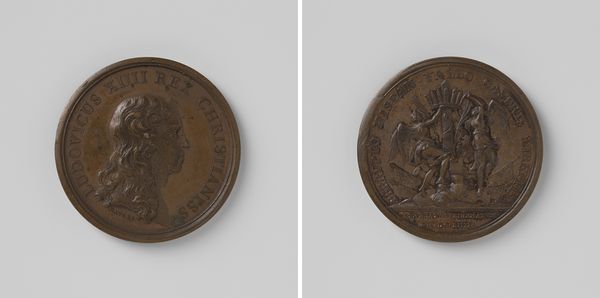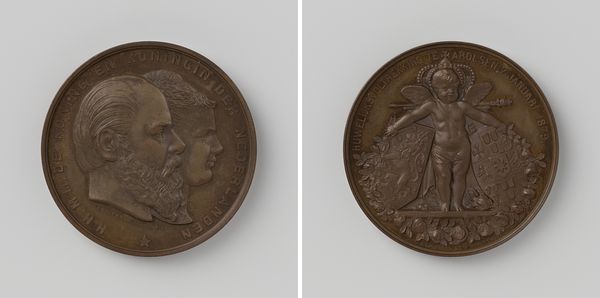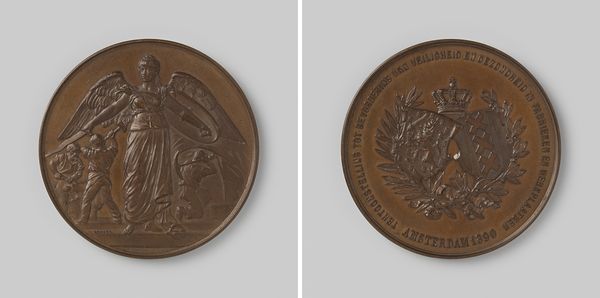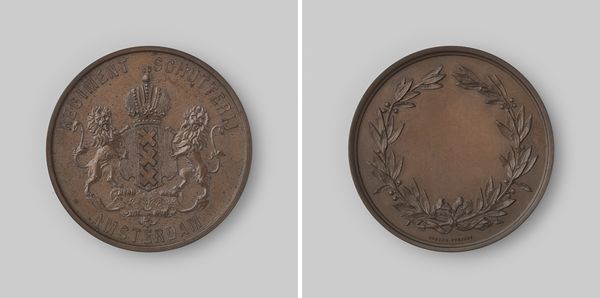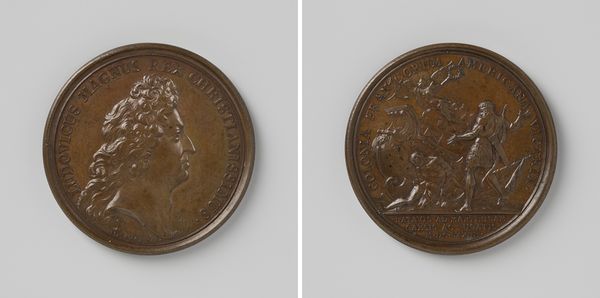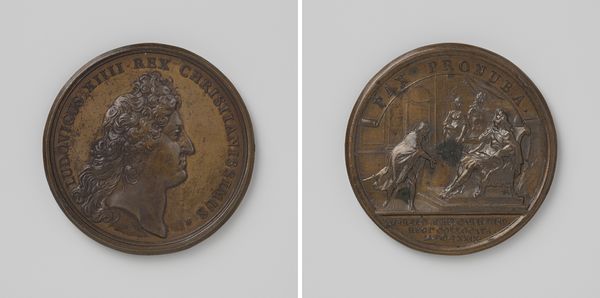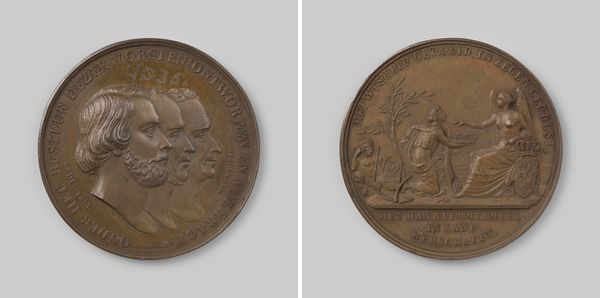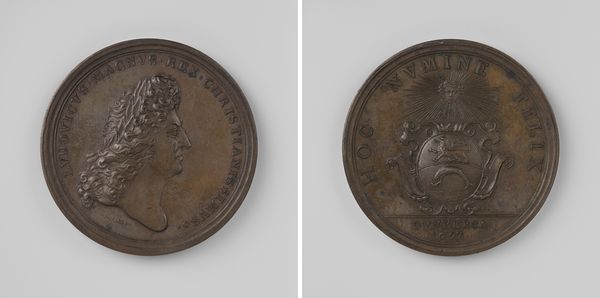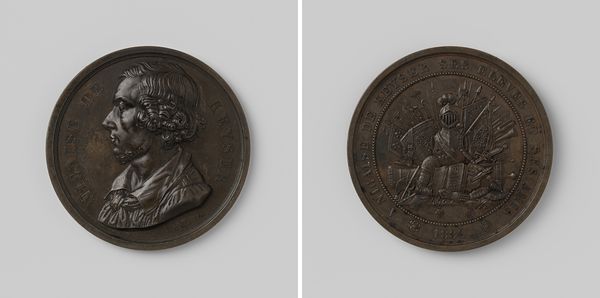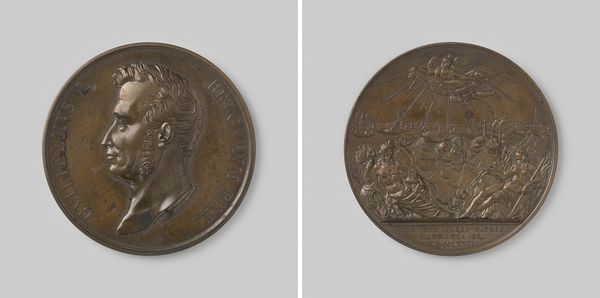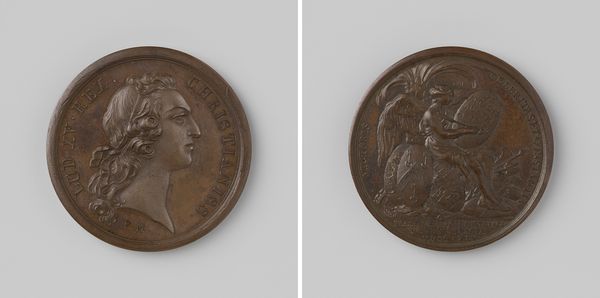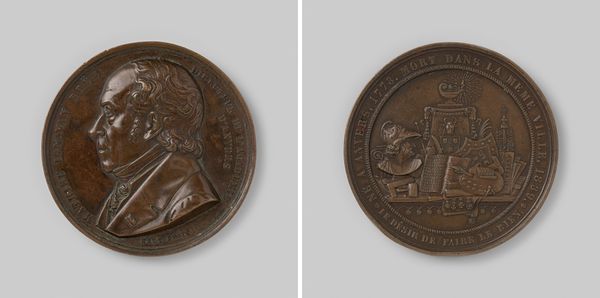
Huwelijk van Prins Frederik van Oranje en Prinses Louise van Pruisen 1825 1825
0:00
0:00
relief, bronze, sculpture
#
portrait
#
medal
#
neoclacissism
#
sculpture
#
relief
#
bronze
#
sculpture
#
ceramic
#
history-painting
Dimensions: diameter 4.2 cm, weight 51.44 gr
Copyright: Rijks Museum: Open Domain
Curator: This bronze relief sculpture by Gottfried Bernhard Loos commemorates the marriage of Prince Frederik of Orange and Princess Louise of Prussia in 1825. What strikes you about it? Editor: I notice its Neoclassical style; it's like two medallions, each side a detailed relief. One side shows the couple, the other a winged figure. What would you make of this work, specifically? Curator: We should start with its materiality. Bronze suggests durability and status. As a multiple, how does this form depart from traditional unique sculptures and challenge the definition of high art? How does this mode of production and consumption reflect the power dynamics and social aspirations of the period? Editor: Good point. The ability to reproduce the image for distribution would spread a certain image of the royal couple, and potentially reinforce their power… Curator: Precisely! The medallions also give the impression that these sorts of "reliefs" function as symbols of the bourgeois appropriation of aristocratic display... Considering its purpose, it moves beyond mere aesthetics. What societal needs did pieces like this satisfy? Editor: Maybe it was meant to cement political ties through a widely circulated token of the wedding? It speaks to how objects play an active role in shaping and reflecting social relationships. Curator: Exactly. Its design, materials, and distribution shed light on social norms, political motivations, and even the emerging technologies that allowed for its production. We must remember that this 'high art' isn't divorced from the daily life that supported its creation. What new insights does this give you about art history? Editor: Thinking about it in terms of bronze, production and consumption makes me reconsider other works I’ve looked at! I hadn’t considered the labor and means necessary for their production. Curator: A great takeaway. The life cycle of materials provides invaluable information, moving beyond the "aura" of art, to question the historical conditions under which we see the art.
Comments
No comments
Be the first to comment and join the conversation on the ultimate creative platform.
